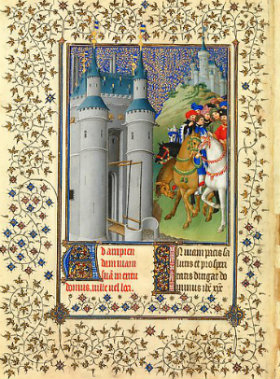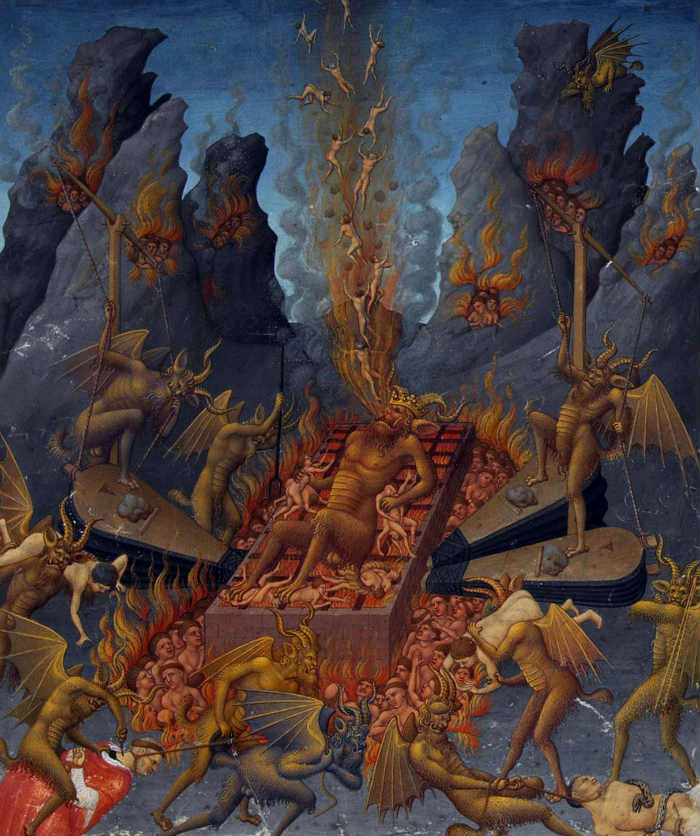Search:: Artists Alphabetically Artists by Country Artists by Century Artists by Movement
The Limbourg Brothers
Paul, Herman and John Limbourg
Dutch Medieval Illuminators
The brothers were born sometime in the 1370s and they all died of the plague in 1416

The Limbourg Brothers were masters of illuminated manuscript painting. They had an extraordinary courtly style, graceful and refined. In the year 1413 Paul, Herman and John Limbourg were selected by the French Duke of Berry, Jean de Berry, to illuminate the Très Riches Heures, a Book of Hours. This masterpiece of manuscript illumination is widely regarded as the greatest success of Gothic book illumination as well as the highlight of medieval painting. Sadly the Duke along with all three brothers perished in the plague epidemic of 1416 and the book was not completed until some time later. In Medieval times book illumination materials were extremely costly, and included ground up precious stones and gold and silver leaf. The labour involved was tremendous and illustrated manuscripts often took years and sometimes decades to complete. Only the rich and powerful could afford to purchase such masterpieces. The best illuminators, such as the Limbourg Brothers, were celebrities, highly sought after. They received sumptuous gifts and money from their royal patrons.
Like many Medieval painters The Limbourg Brothers loved painting scenes of sinners wallowing in Hell. The horrible fate of backsliders and heathens suffering at the hands of demons and the devil were among their favorite subjects.

Illuminated manuscripts represented early Christian culture and values as well as courtly splendor. Most prominently featured are the holy symbols of the Christian faith--Christ, Saints, The Cross, Virgin Mary, Chalice, Keys, The Anchor, Wheat , Animals, Fish, Angels,Birds, Insects and Satan.
Important Words, People, Phrases, Chactoristics related to the Northern Renaissance Art Movement - allegorical painting, Humanism, rebirth, Protestant Reformation, 1 point perspective, human reasoning, Hieronymus Bosch, Limbourg Brothers, Robert Campin, Jan Van Eyck, Jean Fouquet, Albrecht Dürer, Johannes Gutenberg, Johann Reuchlin, Desiderius Erasmus, Martin Luther, rise of the merchant class, glazing, impasto, scriptorium, illuminator, invention of the printing press, woodcuts, engravings, commerce, Northern Europe, Antwerp, Flanders, Bruges, renewed interest in classical learning, mythological scenes, genre painting, landscapes, portraits, moralizing overtones, human vices, lust, paradise, spirituality, piousness, living a simple life, tradesmen at work, idyllic scenes of peasants, playing games, feasting, linear perspective, humour, satire, spiritually significant, illuminated manuscript, idealized biblical themes, emotion, illuminator, iconoclast, Virgin and Child, axonometric drawing, curiosity about the natural world, Age of Discovery, realistic use of colours and light, Old Testament stories, Gospel parables, The Blackdeath, Christian symbolism
☼☼☼☼☼
Require more information about The Limbourg Brothers? Poke around every nook and cranny of the known universe for information this subject. Search Here
© HistoryofPainters.com If you like this page and wish to share it, you are welcome to link to it, with our thanks.